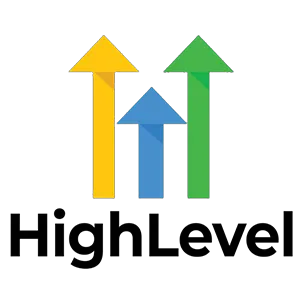
How Long Should a Meta Description Be? 2025 Update - Suffari
Determining the optimal length for a meta description is crucial for maximizing click-through rates and improving search engine visibility. A well-crafted meta description should be concise yet informative, providing a clear summary of the page content. Understanding the ideal character count helps ensure that your message is fully displayed in search engine results, attracting users to click on your link.
Table of Contents
How Long Should a Meta Description Be? 2025 Update - Suffari
What Is The Ideal Length For A Meta Description?
Max Meta Description Length (characters) Breakdown by Post Type and Page Intent
Other Factors that may affect the max meta description character length
Max Meta Description Length by Post Type
Role of Meta Descriptions in SEO
Search Engines May Truncate Longer Descriptions
Device and Screen Size Affect Snippet Display
Impact of Length on Search Results
Best Practices for Crafting Meta Descriptions
Tailor Descriptions to Page Content and Add Primary Keywords
Write Clear and Compelling Calls-to-Action
Avoiding Duplicate Meta Descriptions
Tools to Measure and Optimize Meta Descriptions
How to create effective meta descriptions and monitor their performance
Step-by-Step Guides to craft and optimize meta descriptions for all scenarios.
Exercise: Research and Implementation
Exercise: Strategic SEO Optimizations
Exercise: See how different Search Engines Display your Meta Description
Exercise: Test Meta Descriptions on Different Devices
What is the optimal character length for a meta description?
Why is Google cutting off my meta description when it’s only 150 characters?
What’s the max character length for a blog post’s meta description?
What’s the max character length for a privacy policy page’s meta description?
What’s the max character length for a blog category page’s meta description?
What Is The Ideal Length For A Meta Description?
The ideal length for a meta description is crucial for effective SEO and user engagement. It ensures that your message is fully displayed in search engine results without being cut off, maximizing click-through rates. However, the ideal length for a meta description is not a simple answer. The standard meta description maximum character count is not always 155-160 characters. It depends on post type, page intent, browser, and device.
Max Meta Description Length (characters) Breakdown by Post Type and Page Intent
Standard Pages: 155-160 characters
Blog Posts: 140-155 characters (see explanation below)
Legal Pages (terms, privacy policy): 140-155 characters
Category Pages (archives): either 155-160 characters or 140-155 characters
Other Factors that may affect the max meta description character length
Mobile devices may show slightly less characters
Other browsers (Bing, Yahoo) may also vary in meta description length
Longer descriptions may be truncated, reducing their impact
Concise, informative meta descriptions tend to perform better in attracting clicks
Google uses the search term intent (not the exact search term anymore) to bold parts of the meta description helping increase click-through rates.
See a breakdown of the max meta description lengths for various post types below.
Max Meta Description Length by Post Type
When it comes to writing meta descriptions, there is no one-size-fits-all approach. The optimal length can vary depending on the type of page or post. Standard pages typically have a maximum of 155-160 characters, but for blog posts and legal pages like privacy policy and terms and conditions, this can be reduced to 140-145 characters due to a 15-character date that Google adds before the meta description. It's not consistent for blog category pages. This variation is important to consider when crafting effective and relevant meta descriptions for your pages. Let’s find out when and why Google adds this extra date and how to appropriately adjust your meta descriptions to accommodate the change.
Standard Pages
Standard web page meta descriptions have a maximum length of 155-160 characters.

Blog Posts
Meta descriptions for blog posts have a maximum length of 140-145 characters because Google inserts a 15-character date before the meta descriptions, thus reducing the max characters by 15.

Legal Pages
Google also inserts 15-character dates at the beginning of meta descriptions for legal pages such as your terms and conditions, privacy policy, terms of service, and terms of use, which reduces the max meta description length by 15. The ideal meta description length for legal pages is a maximum of 140-145 characters long. This is important because Google wants you to know when the last time the page was updated so you know if there have been any recent updates or changes to these pages.

Category Pages
Category pages, such as a blog category archives page, may occasionally have the date inserted before the meta description giving you a maximum meta description length of 140-145 characters. However, sometimes it does not, which leaves you with 155-160 characters max. As a best practice for category pages, make sure you check the search results in Google on every category after you’ve made changes to a meta description so you can see how Google is displaying it - with or without the date - to see if your meta description is too long.

Role of Meta Descriptions in SEO
Meta descriptions play a crucial role in providing a preview of a web page’s content in search engine results. These succinct summaries are essential in enticing users to click on a link by offering a quick overview of the page. While there is no strict character limit for meta descriptions, best practices suggest that an optimal length for these snippets is around 150-160 characters. This character count is important to ensure that the meta description displays in full without being cut off, potentially impacting the click-through rate.
When creating a meta description, it's vital to make sure that it accurately and compellingly reflects the content of the web page. Including relevant keywords and a clear call-to-action can also significantly increase the effectiveness of the description. By crafting a precise and engaging summary within the ideal character count, webmasters can enhance the visibility and appeal of their pages in search results, ultimately driving more traffic to the site.
Meta descriptions essentially serve as a marketing tool for individual web pages, offering a brief yet impactful window into the page’s content to capture the interest of potential visitors. As such, page owners should pay close attention to crafting well-written and enticing meta descriptions in line with best practices for optimal results.
Search Engines May Truncate Longer Descriptions
It's important to note that search engines, including Google, have specific criteria for displaying meta descriptions in search results. When a meta description exceeds the recommended length, it may be truncated, leading to vital information being cut off and potentially compromising its effectiveness in attracting clicks. This underscores the importance of adhering to best practices and keeping meta descriptions within the optimal character limit to ensure that they are fully visible to searchers, ultimately maximizing their impact.

Furthermore, when crafting meta descriptions, it’s essential to avoid duplicating content across multiple pages, as this can lead to confusion for both users and search engines. Each meta description should be unique and tailored to the specific content of the page it represents to provide the most accurate and compelling representation of the page in search results.
By understanding and optimizing for the specific requirements and limitations of search engine results, webmasters can effectively enhance the visibility and attractiveness of their web pages, thereby improving their overall performance in organic search results.
Device and Screen Size Affect Snippet Display
Aside from the character length and content of meta descriptions, another crucial factor that can influence the display of these snippets is the device and screen size of the user viewing the search results. It’s well-known that search results can differ between desktop and mobile devices, and this can have a direct impact on the visibility and presentation of meta descriptions.
For example, a meta description that is fully visible in a desktop search result may be truncated when displayed in a mobile search result due to the reduced screen space on mobile devices. This underscores the significance of considering the cross-device display of meta descriptions and ensuring that they are effectively optimized for presentation on both desktop and mobile platforms.
By tailoring meta descriptions to be impactful and fully convey their intended message across different devices, webmasters can ensure that their snippets are capable of capturing the attention of potential users regardless of the device they are using to conduct the search.
Recommended Character Limit
The optimal length for a meta description is generally between 140 to 160 characters. This range ensures that the entire description is displayed in search engine results without being cut off, providing enough space to convey the key message effectively. Keeping within this limit helps improve click-through rates and enhances user experience by offering a clear summary of the webpage’s content.
Search Engine Guidelines
Meta descriptions play a crucial role in attracting visitors to your website by providing a concise summary of your page content. Understanding the optimal length for these descriptions can enhance click-through rates and improve search engine visibility. In this article, we will explore best practices for crafting effective meta descriptions and discuss how long they should be to maximize their impact.
Google's Recommendations
Google recommends that meta descriptions should be between 150 to 160 characters in length. This range ensures that the entire description is visible in search engine results without being cut off. Crafting concise and compelling meta descriptions within this limit can improve click-through rates and provide a clear summary of the page content. Avoid keyword stuffing and focus on creating relevant, engaging summaries that accurately represent the page's purpose.
Bing and Other Search Engines
The ideal length for a meta description is typically between 150 and 160 characters. Search engines like Google often display up to this limit in search results, ensuring that your message is fully visible to users. Bing and other search engines may have slight variations in how much of the meta description they show, but keeping it within this range helps optimize visibility across platforms. Crafting concise and relevant meta descriptions enhances click-through rates and aligns with search engine guidelines, which emphasize the importance of providing clear and accurate summaries of webpage content.
Impact of Length on Search Results
When considering how long a meta description should be, it is important to understand the impact of length on search results. Search engine guidelines typically recommend keeping meta descriptions between 140 and 160 characters. This ensures that the entire description is displayed in search snippets without being cut off, providing users with a clear and concise summary of the page content. Longer descriptions risk being truncated, which can reduce click-through rates by omitting key information. Therefore, crafting meta descriptions within this optimal length helps improve visibility, relevance, and overall effectiveness in attracting potential visitors through search engines.

Best Practices for Crafting Meta Descriptions
Creating effective meta descriptions is essential for attracting click-throughs and improving search engine visibility. A well-crafted meta description should be concise, relevant, and compelling, providing a clear summary of the page content. Understanding how long a meta description should be helps ensure it fits within search engine display limits while enticing users to visit your site.
Be Concise and to the Point
Conciseness in language is crucial because it allows you to convey the core message effectively within the limited space. A clear and succinct meta description helps users quickly understand the content of the page, encouraging them to visit your website. Overly long or vague descriptions can be truncated or fail to attract attention, reducing their effectiveness in search rankings and user engagement.
Tailor Descriptions to Page Content and Add Primary Keywords
When crafting meta descriptions, it is essential to strike a balance between providing informative content and optimizing for search engines. Use clear, concise language that accurately summarizes the page's content within the ideal length to ensure full visibility in search results. Incorporate relevant keywords naturally to improve SEO without keyword stuffing, which can harm readability and ranking. Focus on creating compelling calls-to-action that entice users to click, while maintaining a length of around 140-160 characters to prevent truncation. Regularly review and update meta descriptions to keep them aligned with evolving content and SEO best practices.
With the fluctuating nature of character limits and display preferences for meta descriptions, it's clear that a one-size-fits-all approach is insufficient for crafting effective snippets. Instead, webmasters should focus on tailoring each meta description to the specific content and purpose of the individual page it represents. This means taking into account not only the character length but also the unique selling points and primary keywords associated with the page to create a compelling and relevant summary.
Incorporating primary keywords naturally within the meta description is a crucial strategy for enhancing its relevance to user queries and improving its visibility in search results. When search engines analyze and index web pages, they consider the presence and context of relevant keywords, and a well-crafted meta description can significantly contribute to the overall optimization of the page in question.
By ensuring that each meta description is not only within the character limits but also accurately and compellingly represents the content of the page, webmasters can effectively communicate the value of their individual pages to both search engines and potential users, ultimately driving more targeted traffic to their sites.
Write Clear and Compelling Calls-to-Action
One of the key components of a highly effective meta description is the presence of a clear and compelling call-to-action. When determining the ideal length for a meta description, it's important to craft concise and engaging summaries that accurately reflect the page content. Typically, aim for around 140-160 characters to ensure your description displays properly in search engine results without truncation. Writing compelling calls-to-action within this space can significantly increase click-through rates, so use action verbs and create a sense of urgency or curiosity. Remember, a well-crafted meta description acts as a mini-advertisement for your webpage, enticing users to click while clearly conveying the value of your content.
A well-crafted call-to-action not only encourages users to engage with the content but also provides a decisive and persuasive prompt for the user to click on the link and visit the page. This can take various forms, including language that conveys urgency, value, or a clear benefit to the user, ultimately compelling them to take action and engage with the content.
Whether it’s an invitation to discover exclusive insights, take advantage of a limited-time offer, or learn more about a specific topic, the inclusion of a clear and enticing call-to-action can significantly impact the effectiveness of a meta description in driving click-throughs. When combined with the optimal length and strategic use of primary keywords, a well-crafted call-to-action can be a powerful asset in maximizing the impact of a meta description and driving targeted traffic to a web page.
Incorporating clear, actionable language in the meta description can serve as a persuasive and decisive factor in prompting users to click on a particular search result, making it a fundamental element of a highly effective meta description strategy.
Avoiding Duplicate Meta Descriptions
When considering how long a meta description should be, it's essential to craft concise yet informative snippets that accurately summarize the page content. To avoid duplicate meta descriptions, ensure each page on your website has a unique description tailored to its specific topic. Keep your meta descriptions between 150 and 160 characters to maximize visibility in search engine results while preventing truncation. Use clear, compelling language that encourages users to click, and incorporate relevant keywords naturally without keyword stuffing. Regularly review and update your meta descriptions to reflect any content changes, ensuring they remain accurate and engaging. By following these best practices, you can improve your site's SEO performance and provide a better user experience.

Tools to Measure and Optimize Meta Descriptions
Effective meta descriptions play a crucial role in attracting clicks and improving search engine rankings. To ensure they are optimized, various tools are available to measure and analyze their length, relevance, and overall effectiveness. These tools help content creators craft compelling summaries that adhere to best practices and maximize visibility in search results.
Online Character Count Tools
Determining the optimal length for a meta description is essential for maximizing click-through rates and ensuring your message is fully conveyed in search engine results. To achieve this, various tools are available to measure and optimize your meta descriptions effectively. Online character count tools allow you to easily check the number of characters in your meta tags, ensuring they stay within the recommended limits. These tools help prevent truncation by providing real-time feedback on length. Additionally, some advanced tools simulate how your meta descriptions will appear in search engine snippets, allowing you to refine your copy for maximum impact. Utilizing these resources ensures your meta descriptions are concise, compelling, and compliant with best practices, ultimately improving your SEO performance.
SEO Plugins and Extensions
To determine the optimal length of a meta description, it's essential to utilize various tools and SEO plugins that help measure and optimize this element effectively. These tools analyze your meta descriptions to ensure they fit within recommended character limits, typically around 150-160 characters, preventing truncation in search engine results.
SEO plugins like Yoast SEO, All in One SEO Pack, and Rank Math offer built-in features to evaluate your meta descriptions' length and readability. They provide real-time feedback, guiding you to craft concise and compelling summaries that enhance click-through rates.
Extensions such as MozBar, SEMrush SEO Writing Assistant, and Ahrefs SEO Toolbar can also assist by analyzing individual pages' meta descriptions, highlighting areas for improvement, and suggesting optimal lengths. These tools integrate seamlessly with browsers and content management systems, streamlining the optimization process.
Additionally, online tools like Ahrefs simulate how your meta description appears in search results, allowing you to preview its length and appearance before publishing. Using these tools consistently ensures your meta descriptions are both within the ideal length and optimized for attracting users' attention.
Analyzing Click-Through Rates
Measuring and optimizing meta descriptions is essential for improving search engine visibility and click-through rates. Tools such as Google Search Console provide valuable insights into how your meta descriptions perform by analyzing click-through rates and impression data. Additionally, SEO tools like SEMrush, Ahrefs, and Moz offer features to evaluate and suggest improvements for meta descriptions based on performance metrics. A/B testing platforms enable you to experiment with different meta description lengths and content to determine what resonates best with your audience. By regularly analyzing these metrics, you can refine your meta descriptions to ensure they are compelling, relevant, and within the optimal length, which typically ranges between 150-160 characters for maximum effectiveness.

How to create effective meta descriptions and monitor their performance
Creating highly effective meta descriptions that maximize the impact of individual web pages in search results is a strategic process that involves careful consideration of various factors, including character length, content relevance, keyword usage, and the inclusion of compelling calls-to-action. By adhering to best practices and tailoring each meta description to the unique content and purpose of the page it represents, webmasters can effectively position their pages for success in attracting organic search traffic and maximizing their visibility and appeal to potential visitors.
Test It Out!
Furthermore, it's crucial for webmasters to continually test and refine their meta descriptions based on performance metrics and changing search engine preferences to ensure that they are consistently optimized for maximum effectiveness. By staying attuned to the evolving landscape of search engine optimization and the specific requirements and limitations of meta descriptions, webmasters can continuously improve the visibility and impact of their pages in search results, ultimately driving sustainable and targeted traffic to their sites.
It's also valuable for webmasters to take advantage of the various tools and resources available for assessing and optimizing meta descriptions, including search engine performance data, competitive analysis, and expert insights. By leveraging these tools and incorporating a continuous improvement mindset into their meta description strategy, webmasters can stay ahead of the curve and consistently deliver highly effective and impactful meta descriptions for their web pages.
Step-by-Step Guides to craft and optimize meta descriptions for all scenarios.
Here are some easy guides to create and optimize new or existing meta descriptions for increase click-through rates, traffic, and overall performance in every scenario.
Exercise: Research and Implementation
1. Review the meta descriptions of a selection of high-performing web pages in your industry or niche.
2. Analyze the common characteristics, language, and strategies employed in these successful meta descriptions.
3. Use this analysis to guide the refinement and optimization of your own meta descriptions for enhanced performance.
4. Experiment with different approaches and A/B test the impact of varying elements within your meta descriptions on click-through rates and search result performance.
5. Continuously refine and improve your meta descriptions based on the insights and data gathered from your testing and performance analysis.
Exercise: Strategic SEO Optimizations
1. Explore the range of call-to-action strategies and language used in different industries and verticals.
2. Evaluate the effectiveness of different approaches in driving user engagement and click-throughs in search results.
3. Integrate compelling and tailored call-to-action elements into your meta descriptions, considering the unique value propositions and interests of your target audience.
4. Monitor and analyze the impact of your call-to-action language on the performance of your meta descriptions and make data-driven adjustments to optimize its effectiveness.
5. Continuously refine and enhance your call-to-action strategies based on ongoing performance evaluation and industry best practices.
Exercise: See how different Search Engines Display your Meta Description
1. Conduct a detailed assessment of the different character limits, preferences, and guidelines for meta descriptions across various search engine platforms and channels.
2. Tailor your meta descriptions to align with the specific requirements and idiosyncrasies of each platform, ensuring maximum visibility and relevance in their respective search results.
3. Stay abreast of any updates or changes to the meta description guidelines and preferences of different search engine platforms and adjust your strategies accordingly to maintain optimal performance.
4. Seek out and leverage authoritative insights and documentation from the various search engine platforms to inform and enhance your understanding of meta description optimization best practices.
5. Continuously adapt and refine your meta description strategies based on the evolving landscape and criteria of different search engine platforms to ensure sustained and optimal performance.
Exercise: Test Meta Descriptions on Different Devices
1. Review the impact of different device and screen size displays on the visibility and effectiveness of meta descriptions in search results.
2. Tailor your meta descriptions to ensure compelling and impactful presentation across a diverse range of devices and screen sizes, considering the specific user experience and display constraints of each platform.
3. Conduct comprehensive testing to evaluate and optimize the cross-device relevance and presentation of your meta descriptions for a seamless and impactful user experience.
4. Leverage responsive design and adaptive strategies to ensure that your meta descriptions deliver a consistent and compelling message across the full spectrum of devices and user contexts.
5. Continuously iterate and refine your meta description presentation based on insights and performance data from different device and screen size displays to maximize its impact and effectiveness.
Overall, the strategic and tailored approach to crafting highly effective meta descriptions is an indispensable component of on-page SEO optimization and plays a pivotal role in enhancing the visibility and appeal of web pages in search results, ultimately driving increased traffic and engagement. By adhering to the specific character constraints and preferences of different search engine platforms, and incorporating compelling and tailored elements, webmasters can position their individual web pages for sustained and optimal performance in the competitive landscape of search engine results.

Frequently Asked Questions
What is the optimal character length for a meta description?
The optimal length for a meta description is typically between 140 and 160 characters, depending on the post type or page intent. This range ensures that the entire description is displayed in search engine results without being cut off, maximizing visibility and click-through rates.
Why is Google cutting off my meta description when it’s only 150 characters?
On blog posts, some category pages, and legal pages (terms, policies), Google adds a 15-character date to the beginning of the meta description, thus reducing your max character limit from 155-160 down to 140-145 characters.
What’s the max character length for a blog post’s meta description?
The max characters for a blog post is usually 140-145 characters long because Google adds a date (15-character long) before the meta description reducing the normal 155-160 max character length.
What’s the max character length for a privacy policy page’s meta description?
Usually the max characters for a privacy policy page is 140-145 characters long because Google adds a 15-character date before the meta description reducing the standard 155-160 max character length.
What’s the max character length for a blog category page’s meta description?
It depends, either 140-145 characters if Google adds a 15-character date before the meta description in the search results, or 155-160 characters if it doesn’t.
Conclusion
The maximum length for meta descriptions can vary depending on the type of page or post. While standard pages have a recommended length of 155-160 characters, Google may add a 15-character date before the meta description for blog posts, legal pages, and even on some blog category pages. This can reduce the maximum length to 140-145 characters. It's important to keep in mind that Google may truncate longer descriptions, and it's essential to tailor descriptions to the specific content and incorporate primary keywords to improve search engine visibility. Testing out different lengths and formats can also help optimize the effectiveness of meta descriptions for your website.

Suffari’s Website Management Services
A well-crafted meta description is essential for effective website management and search engine optimization. When considering Suffari’s Website Management Services, it’s important to understand the optimal length for your meta descriptions. Generally, a meta description should be between 140 to 160 characters, depending on post type and page intent, to ensure it displays properly on search engine results pages. This length allows you to include relevant keywords and a compelling call-to-action without getting cut off. Suffari helps businesses create optimized meta descriptions within this range, enhancing click-through rates and overall site visibility as part of its free SEO services included in every website management plan. Call now or book a free consultation today!























Youtube